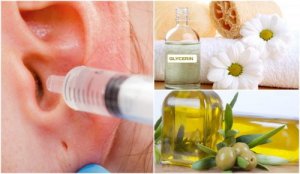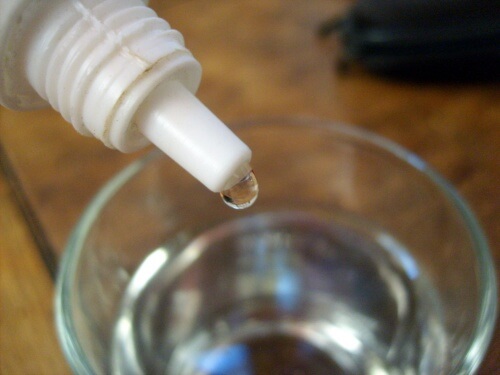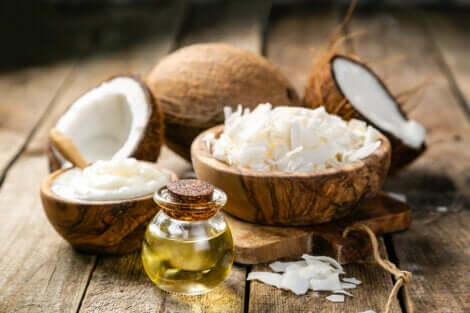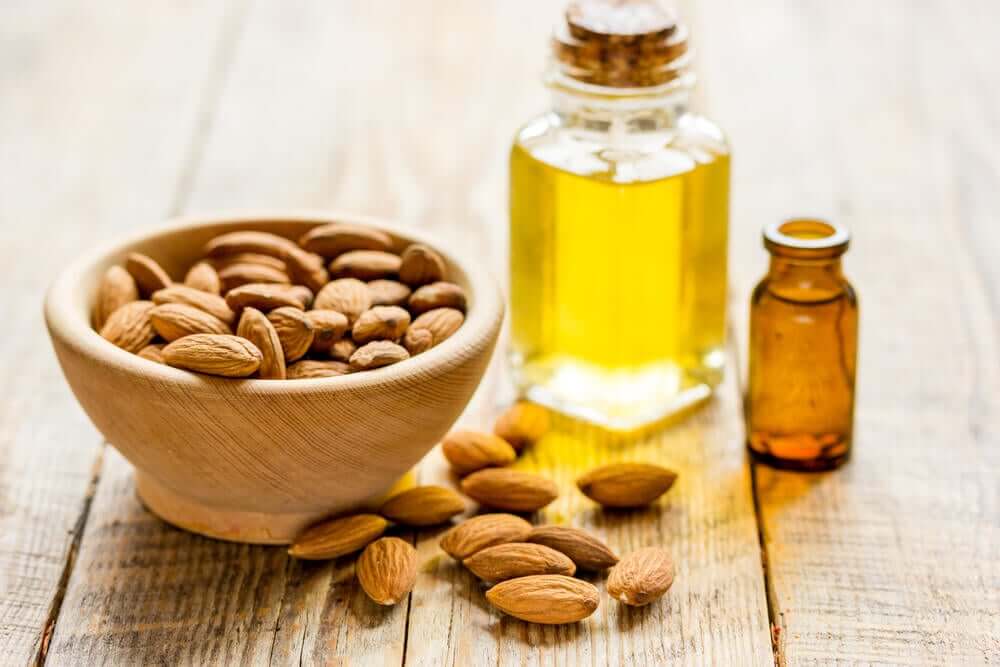Eliminate Ear Wax with These 6 Natural Solutions


Reviewed and approved by the doctor José Gerardo Rosciano Paganelli
The wax that accumulates in our ears is a natural lubricant produced by the glands found in the ear canal. Its main purpose is to protect the area against micro-organisms and external agents, preventing them from getting to the inner part of the ear.
It has a texture similar to a gel, but it’s composed of fats and dead cells that are responsible for keeping infectious micro-organisms away.
Despite this, however, it’s often best to clean your ears regularly, since excessive wax can block the ear, causing symptoms such as tinnitus and reduced hearing.
Below, discover six solutions to this.
Eliminate ear wax with natural products
As this study published in Children’s Medicine points out, when it comes to removing ear wax, the use of cotton swabs or similar elements could have counterproductive effects. Therefore, experts recommend not inserting foreign object into the ears.
In this sense, we suggest using a dropper to place solutions of natural origin in the ears that help to remove wax safely. Of course, always see a doctor if the problem persists.
1. Hydrogen peroxide

Hydrogen peroxide, also known as oxygenated water, is a natural product that helps remove excess wax without affecting the ear canal.
Despite the fact that there isn’t enough evidence on the use of one or another substance to eliminate ear wax, according to this publication from the Nursing Work Journal, hydrogen peroxide diluted with boiling water is recommended.
How to use it
- Firstly, mix equal parts of hydrogen peroxide with water.
- Using a dropper, put two or three drops in each ear.
- Tilt the head so that the liquid enters the ear.
- After 3 minutes, tilt it the other way to remove the residue.
- Repeat this application every twp weeks.
Also read: 8 Natural Hydrogen Peroxide Remedies
2. Glycerine
Glycerine is one of the products which is often used to address problems caused by the build-up of ear wax. This ingredient softens the wax and enables you to clear it out in a matter of minutes.
This information from Mayo Clinic suggests it. However, we recommend consulting a doctor before using it.
How to use it
- Put a couple of drops in the ear.
- Then, tilt your head and keep it in this position for three minutes.
- After the three minutes are up, clean out the residue and repeat in the opposite ear.
3. Coconut oil

Known for its lubricating and anti-bacterial properties, coconut oil is an ideal ingredient for removing ear wax. It’s believed that its use unclogs the ear canals and helps remove excess wax without leaving the area unprotected.
However, at the moment, there isn’t enough scientific evidence to prove it. Thus, we recommend consulting with a health professional before using this remedy.
How to use it
- Firstly, heat up some coconut oil.
- Once warm, apply a couple of drops to each ear.
- Leave it act for three or five minutes and drain the residue.
4. Apple cider vinegar
It’s popularly believed that the application of apple cider vinegar in the ears helps eliminate accumulated wax and regulates the pH of the area to prevent infections, since it contains natural acids that fight microorganisms and help reduce swelling.
However, and because there are yet not enough scientific studies to support such information, it’s best to consult with a doctor before using this remedy to remove ear wax.
How to use it
- Firstly, mix a small amount of apple cider vinegar with warm water.
- Drop some in your ear with the help of a dropper.
- Then, tilt your head and leave it act for three minutes.
- Finally, clean out the residue.
5. Almond oil
The fatty acids in almond oil are ideal for softening ear wax, as this information from the National Health Service indicates.

In addition, this ingredient, rich in vitamin E, could help lubricate the area and relieve symptoms such as irritation and itching.
How to use it
- Firstly, heat a small amount of almond oil.
- After checking that the temperature isn’t too hot, apply two or three drops in each ear.
- Tilt your head so that the oil reaches the interior of your ear and let act for three minutes.
- Then, drain the wax and clean the surrounding skin.
Also read: 5 Recommendations to Remove Earwax
6. Remove ear wax with olive oil
Although there isn’t enough scientific evidence in this regard as of yet, this study published in Practice Nurse points out that the application of olive oil immediately before a doctor removed ear wax helped ensure complete removal. Thus, it could be a good remedy to soften ear wax.
How to use it
- Firstly, heat a little olive oil.
- When it’s warm, draw some in a dropper.
- Apply three drops in each ear and let it act, with your head tilted, for two or three minutes.
Eliminate ear wax with natural remedies: what to keep in mind
As you’ve seen, despite the lack of scientific evidence, some natural remedies could help soften the ear wax so that its easier to remove later on.
However, and as we’ve pointed out throughout the article, we recommend consulting with a health professional before resorting to any of the above remedies.
All cited sources were thoroughly reviewed by our team to ensure their quality, reliability, currency, and validity. The bibliography of this article was considered reliable and of academic or scientific accuracy.
- Bernáldez, P. C. (2018). Traumatismos de oído en niños, otorragia. Medicina Infantil, 25(2). http://www.medicinainfantil.org.ar/images/stories/volumen/2018/xxv_2_177.pdf
- Jiménez, J. R. Q. (2013). Extracción de tapones de cerumen por irrigación (lavado de oidos) en sala de curas. Revista Enfermería del Trabajo, 3(1), 39-43. https://dialnet.unirioja.es/descarga/articulo/4217087.pdf
- Mayoclinic.org. (n.d). Oclusión Por Cerumen – Diagnóstico Y Tratamiento – Mayo Clinic. [online] https://www.mayoclinic.org/es-es/diseases-conditions/earwax-blockage/diagnosis-treatment/drc-20353007
- National Health Service. (2017). Earwax build-up. National Health Service https://www.nhs.uk/conditions/earwax-build-up/
- Rodgers, R. (2013). Does olive oil prevent earwax build-up? An experimental study. Practice Nursing, 24(4), 191-196. https://www.magonlinelibrary.com/doi/abs/10.12968/pnur.2013.24.4.191
This text is provided for informational purposes only and does not replace consultation with a professional. If in doubt, consult your specialist.








